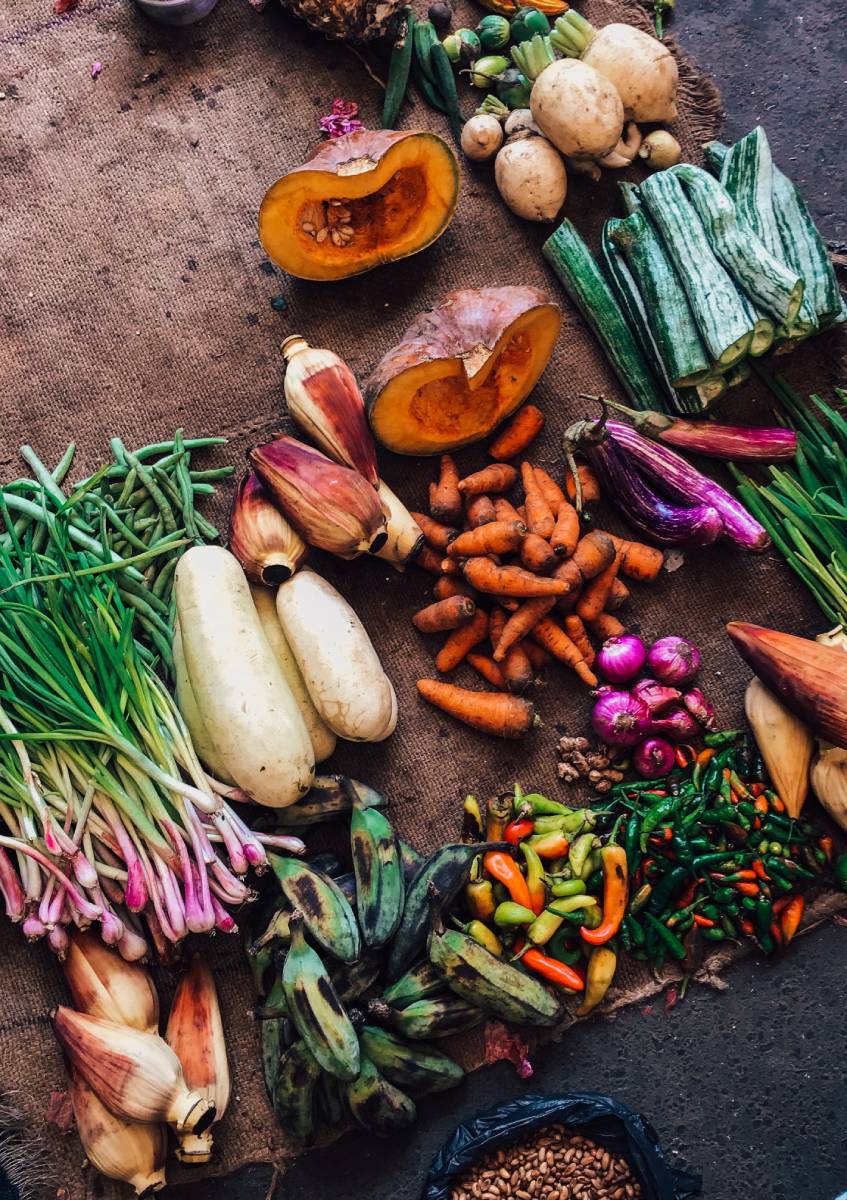Introduction
Food waste is a pressing global issue that requires immediate attention. Every year, a significant amount of food is wasted, leading to negative consequences for the environment and the economy. In this introductory section, we will explore the importance of addressing food waste and discuss its impact on the world around us.
The Importance of Addressing Food Waste
Reducing food waste is crucial for several reasons. First and foremost, it directly contributes to environmental sustainability. Food production involves valuable resources such as land, water, and energy. When we waste food, we also waste these precious resources essential for sustaining life on our planet. We can conserve resources and minimize our ecological footprint by addressing food waste.
Secondly, reducing food waste has a significant impact on the economy. Food waste represents a substantial financial loss for individuals, businesses, and governments. When food is wasted, all the resources invested in its production, transportation, and storage also go to waste. Reducing food waste can save money and create a more efficient and sustainable food system.
Impact of Food Waste on the Environment
Food waste has far-reaching consequences for the environment. When organic waste, such as food scraps, ends up in landfills, it decomposes and produces methane gas. Methane is a potent greenhouse gas that contributes to climate change. Food waste is estimated to be one of the largest sources of human-generated methane emissions. By addressing food waste, we can mitigate climate change by reducing greenhouse gas emissions.
Additionally, food waste is closely tied to deforestation and habitat destruction. The demand for agricultural land to produce food leads to converting forests and natural habitats into farmland. This expansion contributes to biodiversity loss and disrupts ecosystems. Reducing food waste can decrease the need for excessive agricultural production and preserve valuable natural habitats.
Impact of Food Waste on the Economy
The economic impact of food waste is significant at both the individual and societal levels. For individuals and families, wasting food means wasting money. According to studies, a considerable portion of household budgets is spent on food that is discarded. Individuals can save money and make their budgets more sustainable by adopting strategies to reduce food waste.
At a societal level, the economic impact of food waste is substantial. Governments and businesses incur significant costs associated with the disposal of wasted food. Moreover, food waste strains food supply chains and contributes to market inefficiencies. Addressing food waste can create a more resilient and cost-effective food system that benefits everyone.
In conclusion, reducing food waste is crucial for the well-being of our planet and economy. By understanding the importance of addressing food waste and recognizing its environmental and economic impacts, we can take proactive steps to make our kitchens more sustainable. The following sections will explore practical strategies and solutions for reducing food waste and creating a more sustainable kitchen.
Understanding Food Waste
To effectively address food waste, it’s essential to clearly understand what it entails. This section will define food waste and explore its various types. We will also delve into some eye-opening statistics and facts that shed light on the issue’s magnitude.

Definition and Types of Food Waste
Food waste refers to the discarding or losing of edible food at various stages of the food supply chain, from production and processing to distribution, retail, and consumption. It encompasses both intentional and unintentional wastage of food.
-
Production Waste: This type of food waste occurs during the agricultural production process. It includes crops left unharvested, produce deemed unsellable due to cosmetic imperfections, and unused surplus production.
-
Processing Waste: Food waste can occur during processing and manufacturing. It includes trimmings, peels, and other byproducts that are discarded during the preparation of food items.
-
Distribution and Retail Waste: Food waste can happen during food transportation, storage, and retailing. It includes food that expires or becomes unsellable due to poor handling, improper storage, or overstocking.
-
Consumer Waste: Consumer food waste happens when individuals or households discard edible food. This can occur due to overbuying, improper storage, cooking too much food, or misunderstanding expiration dates.
Statistics and Facts about Food Waste
The scale of food waste is staggering, and the following statistics and facts illustrate the urgency of addressing this issue:
-
According to the Food and Agriculture Organization of the United Nations (FAO), approximately one-third of the world’s food produced for human consumption is lost or wasted each year.
-
In developed countries, consumer waste is a significant contributor to food waste, accounting for a substantial a portion of the total waste generated.
-
In the United States alone, it is estimated that up to 40% of the food produced goes uneaten, resulting in approximately 80 billion pounds of food is wasted annually.
-
Food waste squanders valuable resources and contributes to greenhouse gas emissions. When food decomposes in landfills, it produces methane, a potent greenhouse gas that is more harmful than carbon dioxide.
-
Food waste is not just an issue of wasted food but also a matter of social justice. While a significant amount of food goes to waste, and millions of people around the world suffer from hunger and food insecurity.
-
The economic cost of food waste is substantial. In addition to the value of the wasted food itself, there are costs associated with transportation, storage, and disposal.
Understanding the definition and different types of food waste and being aware of the staggering statistics and facts helps highlight the urgency of taking action to reduce food waste. In the following sections, we will explore practical strategies and solutions that can be implemented in a sustainable kitchen to minimize food waste and promote a more sustainable food system.
Planning and Shopping Wisely
One of the critical steps in reducing food waste starts before you even step foot in the kitchen. By planning and shopping wisely, you can minimize the amount of food that goes into the trash. This section will explore strategies for effective meal planning, smart shopping, and understanding food expiration dates.

Meal Planning and Creating Shopping Lists
Meal planning is a valuable tool that helps you make the most of your ingredients while reducing food waste. By taking some time to plan your meals for the week, you can ensure that you only buy what you need and use up ingredients before they spoil. Here are a few tips to help you with meal planning:
-
Plan your meals: Consider your schedule, the number of people you cook for, and any special dietary requirements. Create a weekly meal plan that includes breakfast, lunch, dinner, and snacks.
-
Check your pantry: Before you start planning, check your pantry, refrigerator, and freezer to take stock of what ingredients you already have. Incorporate those items into your meal plan to avoid buying duplicates.
-
Create a shopping list: Based on your meal plan, create a detailed shopping list that includes all the ingredients you need. Stick to your list while shopping to avoid impulse purchases.
Buying in Bulk and Avoiding Impulse Purchases
Buying in bulk can be a cost-effective and sustainable way to shop. It reduces packaging waste and lets you purchase the exact quantities you need. Here are some tips for buying in bulk:
-
Staple items: Consider buying staple items like grains, beans, nuts, and spices in bulk. Store them in airtight containers to maintain freshness.
-
Portion control: Be mindful of the quantities you buy. If you’re purchasing perishable items in bulk, make sure you have a plan to use them before they spoil.
-
Avoid impulse purchases: Stick to your shopping list and avoid buying items on a whim. Impulse purchases often lead to food waste when things go unused.
Understanding Expiration Dates and Food Labeling
Understanding food expiration dates and labeling can help you make informed decisions about the freshness and safety of the food you buy. Here are some guidelines to keep in mind:
-
“Best Before” vs. “Use By”: Different countries have different labeling practices, but generally, “Best Before” dates indicate the date until the product retains its quality. At the same time, “Use By” dates suggest the date until the product is safe to consume. Use your judgment and sensory evaluation to determine the freshness of food beyond these dates.
-
Trust your senses: Smell, sight, and taste can often be better indicators of food freshness than dates alone. Learn to trust your senses and use them to determine if a product is still suitable for consumption.
-
Proper storage: Food can extend its shelf life. Follow storage guidelines for different types of food, including refrigeration, freezing, and using airtight containers.
By planning your meals, creating shopping lists, buying in bulk, and understanding food expiration dates, you can make informed choices and minimize food waste in your sustainable kitchen. In the next section, we will explore strategies for practical food storage and organization to reduce waste further and promote sustainability.
Proper Storage and Organization
Proper storage and organization are crucial in reducing food waste in your kitchen. By ensuring that food is stored correctly, you can extend its shelf life and maintain its quality. This section will explore tips for organizing your refrigerator and pantry, understanding optimal storage conditions for different foods, and using food storage containers effectively.
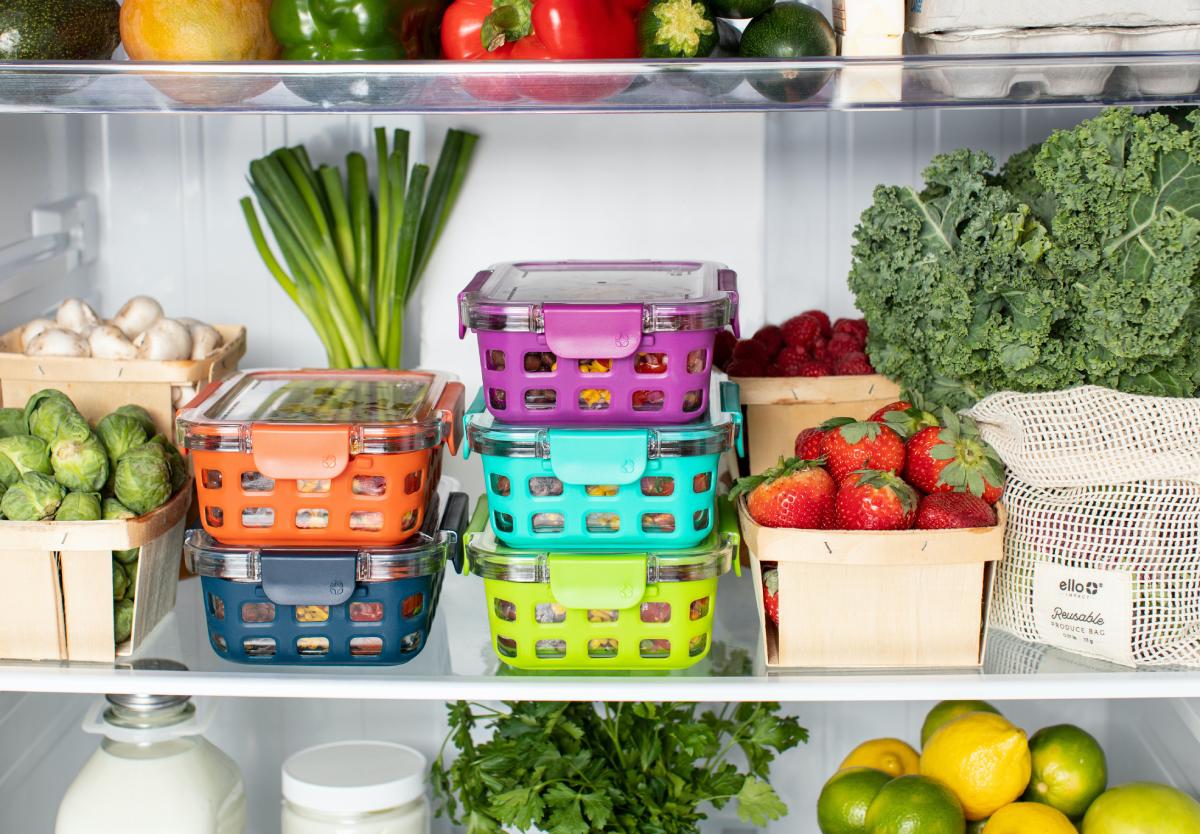
Tips for Organizing the Refrigerator and Pantry
Maintaining an organized refrigerator and pantry helps you keep track of your food inventory, prevent items from getting lost or forgotten, and minimize food waste. Here are some tips to help you stay organized:
-
FIFO (First In, First Out): Practice the FIFO method, where you place newer items at the back and older items at the front. This way, you are more likely to use the older items before expiring.
-
Clear Containers and Labels: Store leftovers and prepared foods in clear containers to easily see what’s inside. Label containers with the contents and date to help you keep track of freshness.
-
Designated Zones: Assign specific areas in your refrigerator and pantry for different food categories. For example, designate shelves for dairy products, vegetables, and condiments. This organization will help you locate items quickly and avoid buying duplicates.
Understanding Optimal Storage Conditions for Different Foods
Different types of food have different storage requirements to maintain their freshness. Here are some guidelines for optimal storage conditions:
-
Refrigerator: Store perishable items like dairy products, meat, poultry, fish, and cut fruits and vegetables in the refrigerator. Keep the refrigerator temperature at or below 40°F (4°C) to slow down bacterial growth.
-
Pantry: Store dry goods, such as grains, pasta, and canned goods, in a cool, dry, and dark pantry. Keep them away from direct sunlight and heat sources.
-
Produce: Some fruits and vegetables should be stored separately, as some produce releases ethylene gas, which can accelerate ripening and spoilage in other produce. For example, keep apples, bananas, and tomatoes separate from leafy greens and other delicate produce.
Using Food Storage Containers Effectively
Choosing suitable food storage containers and using them effectively can help preserve the freshness of your food and reduce waste. Consider the following tips:
-
Airtight Containers: Invest in airtight containers to keep food fresh longer. These containers prevent moisture and air from entering, which can accelerate spoilage.
-
Transparent Containers: Opt for transparent containers to easily see the contents and monitor freshness. This helps avoid forgotten or neglected items in the back of the refrigerator or pantry.
-
Proper Portioning: Divide leftovers into smaller portions to ensure you only defrost or heat what you need. This prevents unnecessary waste when reheating an entire batch.
By organizing your refrigerator and pantry, understanding optimal storage conditions, and using food storage containers effectively, you can significantly reduce food waste and promote sustainability in your kitchen. In the next section, we will explore creative ways to further repurpose food scraps and reduce kitchen waste.
Mindful Cooking and Portion Control
In a sustainable kitchen, mindful cooking and portion control are fundamental practices that significantly reduce food waste. You can make the most of your food resources by utilizing leftovers, being creative with ingredients, practicing portion control, and embracing meal prepping. Let’s explore these strategies in detail:

Cooking with Leftovers and Using Ingredients Creatively
Leftovers often end up in the back of the refrigerator, forgotten, and eventually discarded. However, you can transform leftovers into delicious new dishes with some creativity. Consider these ideas:
-
Revamp and Repurpose: Use leftover vegetables, meats, or grains as ingredients for soups, stews, casseroles, or stir-fries. Get creative with flavors and textures to create exciting new meals.
-
Transform into Snacks: Repurpose leftovers into snacks like wraps, sandwiches, or salads. For example, leftover roasted chicken can be turned into a tasty chicken salad.
-
Blend into Smoothies: Overripe fruits or greens can be blended into nutritious smoothies. They add flavor, vitamins, and minimize waste.
Portion Control Strategies to Avoid Over-Serving
Controlling portion sizes promotes healthier eating habits and reduces food waste. Here are some strategies to help you avoid over-serving:
-
Start with Smaller Portions: Serve yourself and your family smaller portions initially. You can always go back for seconds if needed, reducing the likelihood of leftover food going to waste.
-
Serve Family-Style: Instead of serving individual plates, try family-style meals where everyone can take the desired amount. This way, each person can take what they will eat, minimizing leftovers.
-
Save Extras for Later: If you find yourself with more food than you can finish, immediately store the leftovers in appropriate containers and refrigerate or freeze them for future meals.
Meal Prepping and Freezing Meals for Later Use
Meal prepping and freezing meals effectively reduce food waste and save time. Planning and preparing meals in advance means avoiding last-minute food waste and having convenient options for busy days. Consider the following tips:
-
Plan Weekly Meals: Take some time to plan your meals for the week. This allows you to create a shopping list with specific quantities, reducing the chances of buying more than you need.
-
Batch Cooking: Cook larger quantities of food and portion them into individual servings. Freeze the extra portions for quick and easy meals in the future.
-
Label and Date: Label and date each container when freezing meals. This ensures you can easily identify and consume older meals first, maintaining freshness and reducing waste.
By being mindful in the kitchen, utilizing leftovers creatively, practicing portion control, and embracing meal prepping, you can significantly reduce food waste and make sustainable choices. In the next section, we will explore composting and other ways to handle kitchen scraps responsibly.
Composting and Food Rescue
Reducing food waste goes beyond the kitchen. It extends to responsible waste management and supporting initiatives that help redistribute surplus food. This section will explore two essential strategies: setting up a composting system at home and participating in food rescue programs.
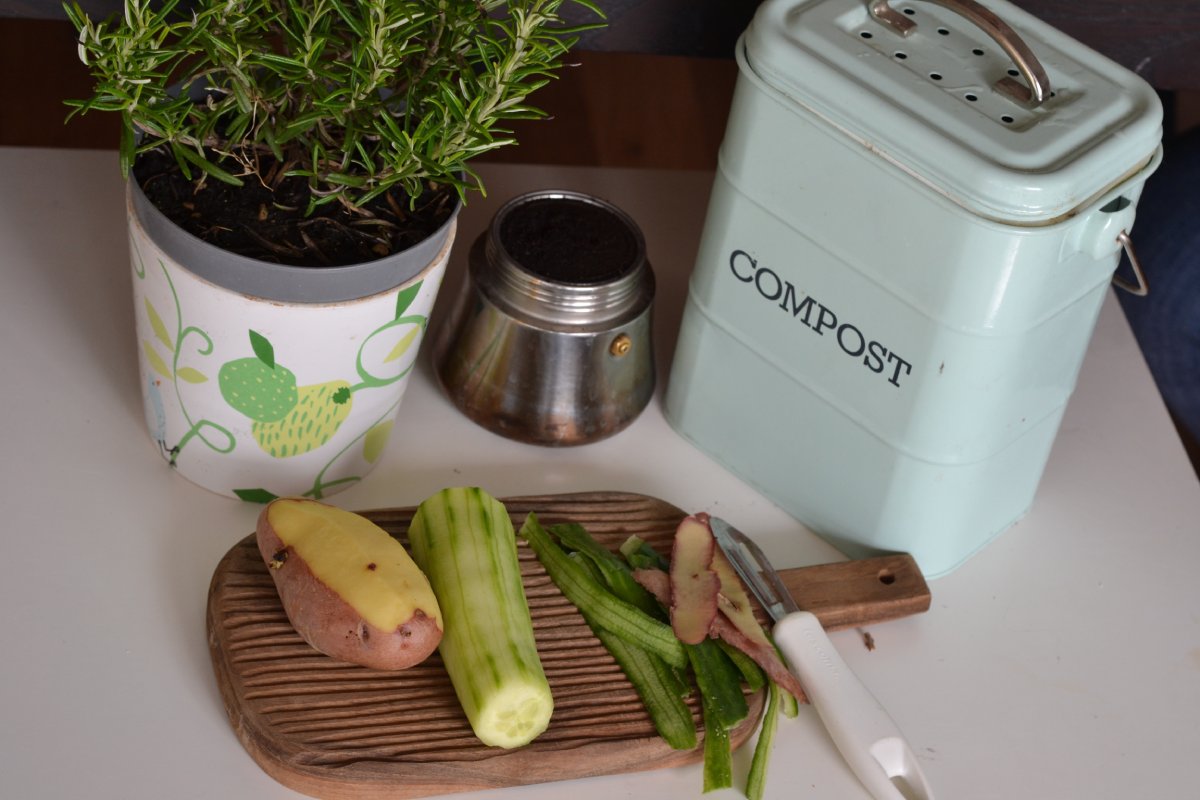
Setting up a Composting System at Home
Composting is a natural process that converts food scraps and organic materials into nutrient-rich compost. Composting at home can divert food waste from landfills and create a valuable resource for your garden. Here’s how to get started:
-
Choose a Composting Method: There are several methods to choose from, including traditional composting bins, worm composting (vermicomposting), or compost tumblers. Select a method that suits your space, lifestyle, and composting goals.
-
Collect Compostable Materials: Collect fruit and vegetable scraps, coffee grounds, tea bags, eggshells, yard trimmings, and other organic materials. Avoid adding meat, dairy, oily foods, or non-biodegradable items to your compost pile.
-
Layer and Maintain: Layer your compost materials, alternating between green (nitrogen-rich) and brown ( carbon-rich) materials. Keep the compost moist and turn it on regularly to encourage decomposition.
-
Harvest and Use Compost: After several months, your compost will transform into dark, crumbly soil. Harvest the compost and use it to enrich your garden soil or potted plants, closing the sustainability loop.
Donating Excess Food to Local Food Banks or Shelters
Food banks and shelters are crucial in feeding individuals and families in need. Instead of letting excess food go to waste, consider donating it to these organizations. Here’s how you can participate:
-
Find Local Donation Centers: Research local food banks, community kitchens, and shelters that accept food donations. Reach out to them to understand their guidelines, accepted food items, and donation procedures.
-
Donate Non-Perishable and Fresh Foods: Donate non-perishable items such as canned goods, dried grains, and packaged foods with long shelf lives. If you have surplus fresh produce or perishable items, coordinate with the organization to ensure timely delivery.
-
Maintain Food Safety: Handle and store food donations properly to ensure their safety and quality. Check expiration dates, package items securely, and maintain appropriate temperature control during transportation.
Joining Community Food Rescue Programs
Community food rescue programs aim to redirect surplus food from businesses and individuals to those in need. By getting involved, you can contribute to reducing food waste on a larger scale. Here’s how you can participate:
-
Research Local Programs: Look for community food rescue programs or food recovery organizations in your area. These programs may collect excess food from restaurants, grocery stores, and events.
-
Volunteer or Support: Consider volunteering your time or resources to help collect, sort, or distribute food. You can also support these programs through monetary donations or by spreading awareness in your community.
-
Promote Food Sharing Initiatives: Encourage businesses and individuals to participate in food-sharing initiatives by donating surplus food rather than throwing it away. Advocate for local policies that support food waste reduction and redistribution efforts.
By setting up a composting system at home, donating excess food to local food banks or shelters, and joining community food rescue programs, you can actively reduce food waste and support those in need. The next section will explore the importance of ongoing awareness and education in sustaining these practices.
Creative Recipes for Food Scraps
Don’t let those food scraps go to waste! In this section, we’ll explore some creative and delicious ways to repurpose commonly discarded food scraps. You can use vegetable scraps, stale bread, and fruit peels creatively to minimize food waste while adding unique flavors to your meals.

Using Vegetable Scraps for Homemade Broths and Stocks
Vegetable scraps like carrot tops, onion peels, celery leaves, and herb stems may seem like kitchen waste. Still, they can be transformed into flavorful broths and stocks. Here’s how:
-
Collect Vegetable Scraps: Save clean and fresh vegetable scraps in a container or freezer bag. Include onion peels, carrot ends, celery leaves, garlic skins, and herb stems. Avoid using scraps that are moldy or spoiled.
-
Prepare Broth or Stock: In a large pot, add the vegetable scraps and cover them with water. Bring the mixture to a boil, then reduce the heat to a simmer. Allow it to simmer for an hour or more to extract the flavors.
-
Strain and Store: Once the broth or stock has simmered and developed a rich taste, strain it through a fine-mesh sieve or cheesecloth to remove the solids. Store the broth in airtight containers in the refrigerator or freezer for future use in soups, stews, sauces, and risotto.
Transforming Stale Bread into Delicious Recipes
Stale bread doesn’t have to end up in the trash. Give it a new lease on life with these creative ideas:
-
Croutons and Bread Crumbs: Cut stale bread into small cubes, toss them with olive oil, herbs, and spices, then bake until crispy to make homemade croutons. Alternatively, process stale bread slices in a food processor to make bread crumbs that can be used in recipes like meatballs, stuffings, or topping for baked dishes.
-
French Toast or Bread Pudding: Stale bread is perfect for indulgent treats like French toast or bread pudding. Soak the bread in a mixture of beaten eggs, milk, and flavorings like cinnamon and vanilla extract, then cook it on a grill or bake it to create a delicious and comforting breakfast or dessert.
-
Panzanella Salad: Panzanella is a Tuscan salad with stale bread as a key ingredient. Tear the bread into bite-sized pieces and combine them with ripe tomatoes, cucumbers, red onions, basil, and a tangy vinaigrette dressing. The bread soaks up the flavors and adds texture to the salad.
Repurposing Fruit Peels and Rinds in Cooking and Baking
Don’t discard those fruit peels and rinds! They can bring a burst of flavor to your culinary creations. Consider these ideas:
-
Citrus Zest: The zest of citrus fruits like lemons, oranges, and limes contains aromatic oils that can enhance the taste of your dishes. Grate the outer colored part of the peel and use it to flavor sauces, marinades, baked goods, and desserts.
-
Candied Peels: Turn citrus peels into a delightful sweet treat by candying them. Boil the peels to remove bitterness, then simmer them in a sugar syrup until they become translucent and tender. Toss them in sugar and let them dry before enjoying them as a snack or as garnishes for cakes and pastries.
-
Infused Water and Tea: Add flavor to your water or tea by infusing it with fruit peels. Whether it’s cucumber peels, apple peels, or watermelon rinds, infusing them in water or steeping them in hot tea can create a refreshing and subtly flavored beverage.
With these creative recipes, you can make the most of your food scraps, reducing waste while adding new taste dimensions to your meals. In the next section, we will explore the role of mindful consumption and its impact on reducing food waste in our kitchens.
Conscious Eating and Leftover Management
Incorporating conscious eating habits and managing leftovers are critical strategies for reducing food waste in a sustainable kitchen. By being mindful of portion sizes, managing leftovers, and finding creative ways to repurpose them, we can significantly minimize the amount of food that goes to waste.

Being Mindful of Portion Sizes When Dining Out
When dining out or ordering takeout, it’s essential to be mindful of portion sizes to avoid overordering and generating unnecessary food waste. Here are a few tips to keep in mind:
-
Share Meals: Consider sharing dishes with dining companions. This promotes a sense of community and helps prevent excessive food waste.
-
Opt for Smaller Portions: Check if the restaurant offers smaller portion sizes or half portions. This allows you to enjoy a variety of dishes without leaving behind excess food.
-
Take Home Leftovers: If you can’t finish your meal, don’t hesitate to ask for a container to take the leftovers home. This way, you can enjoy the remaining food later and avoid waste.
Tips for Managing Leftovers and Reducing Waste
Leftovers are a valuable resource that can be transformed into new and exciting meals. Here are some tips for effectively managing leftovers:
-
Proper Storage: Store leftovers promptly in airtight containers and refrigerate them within two hours of cooking. This helps maintain their freshness and reduces the risk of spoilage.
-
Label and Organize: Label containers with the contents and date to quickly identify and prioritize leftovers for consumption. Keep the fridge organized to avoid forgetting about leftovers hidden at the back.
-
First In, First Out: Practice the “first in, first out” principle when using leftovers. Consume older leftovers before newer ones to ensure nothing goes to waste.
Incorporating Leftovers into New Meals
Transforming leftovers into new meals is a creative and sustainable way to reduce food waste. Consider these ideas to give your leftovers a delicious makeover:
-
Stir-Fries and Fried Rice: Leftover cooked vegetables, proteins, and rice can be combined in a stir-fry or fried rice. Add some fresh vegetables, seasonings, and sauces to create a flavorful and satisfying dish.
-
Soups and Stews: Use leftover meats, vegetables, and grains to make hearty soups or stews. Simmer them with broth, herbs, and spices for a comforting and nourishing meal.
-
Salads and Wraps: Incorporate leftover roasted vegetables, cooked meats, or grains into vibrant salads or wraps. Add fresh greens, dressings, and condiments for a tasty meal.
By being mindful of portion sizes, managing leftovers, and repurposing them creatively, we can significantly reduce food waste and contribute to a more sustainable kitchen. The next section will explore the importance of composting and food rescue in further reducing our environmental impact.
Engaging the Community and Sharing Resources
Reducing food waste goes beyond individual efforts; it requires collective action and community engagement. By participating in community food-sharing initiatives, sharing excess produce with neighbors or community gardens, and we can create a more sustainable and interconnected food system by spreading awareness about food waste reduction.
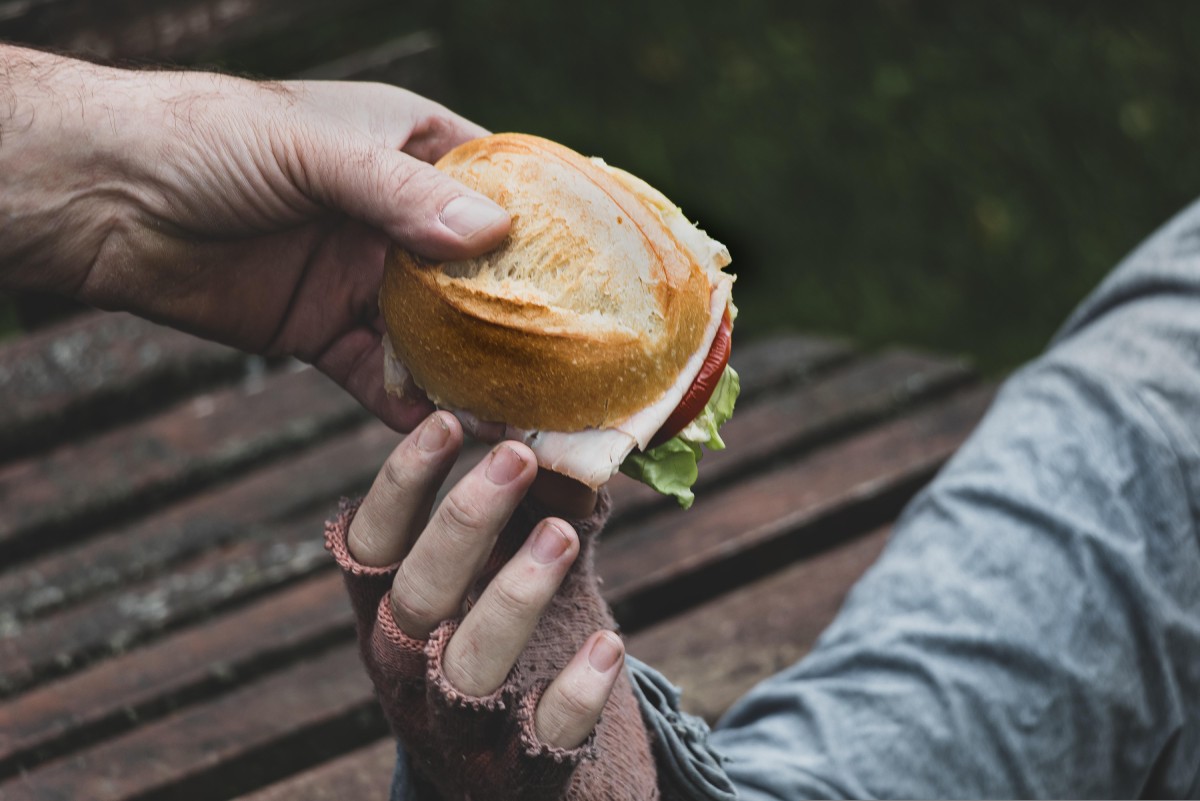
Participating in Community Food Sharing Initiatives
Community food-sharing initiatives provide an excellent platform to connect with like-minded individuals and organizations working towards reducing food waste. Here’s how you can get involved:
-
Food Swaps: Join local food swap events where individuals gather to exchange surplus produce, homemade goods, and preserves. These swaps encourage community engagement and foster a culture of sharing resources.
-
Food Co-ops: Consider joining a food cooperative, which allows community members to purchase food collectively items in bulk, reducing packaging waste and supporting local producers.
-
Community Fridges: Support or initiate community fridge programs where surplus food can be donated and accessed by those in need. These fridges help combat food insecurity while preventing edible food from being wasted.
Sharing Excess Produce with Neighbors or Community Gardens
If you have a home garden or frequently find yourself with an abundance of produce, consider sharing it with neighbors or local community gardens:
-
Neighborhood Exchange: Start a neighborhood produce exchange where neighbors can trade or share their excess fruits, vegetables, or herbs. This promotes a sense of community while ensuring that homegrown produce doesn’t go to waste.
-
Donate to Community Gardens: Local community gardens often welcome donations of excess produce. Contact nearby gardens to inquire about their donation policies and contribute to their efforts in providing fresh, locally grown food to the community.
-
Share Gardening Knowledge: If you have expertise in gardening, consider organizing workshops or sharing tips with community members interested in growing their food. You contribute to a more sustainable and self-reliant community by empowering others with gardening skills.
Spreading Awareness about Food Waste Reduction
Raising awareness is crucial to inspire others to take action to reduce food waste. Here are some ways to spread the word and encourage others to join the movement:
-
Social Media Campaigns: Use social media platforms to share tips, statistics, and success stories related to reducing food waste. Engage with your audience by encouraging them to share their experiences and ideas.
-
Public Presentations: Offer to give presentations or host workshops at local community centers, schools, or events to educate others about the impact of food waste and provide practical strategies for reducing it.
-
Collaborate with Local Organizations: Partner with local environmental organizations, schools, or community groups to organize food waste reduction initiatives. This can include cooking demonstrations, awareness campaigns, or community-wide challenges.
By engaging the community and sharing resources, we can strengthen our collective efforts in reducing food waste and creating a more sustainable future. In the final section, we will conclude our discussion by summarizing the key points and emphasizing the importance of ongoing commitment to sustainable practices.
Conclusion
In a world where food waste is a significant challenge, adopting sustainable kitchen practices is essential for creating a more environmentally conscious and resource-efficient society. Throughout this article, we have explored various strategies to reduce food waste and promote a sustainable kitchen. As we conclude, let’s recap these strategies, encourage their adoption, and emphasize the importance of collective efforts in creating a sustainable food system.
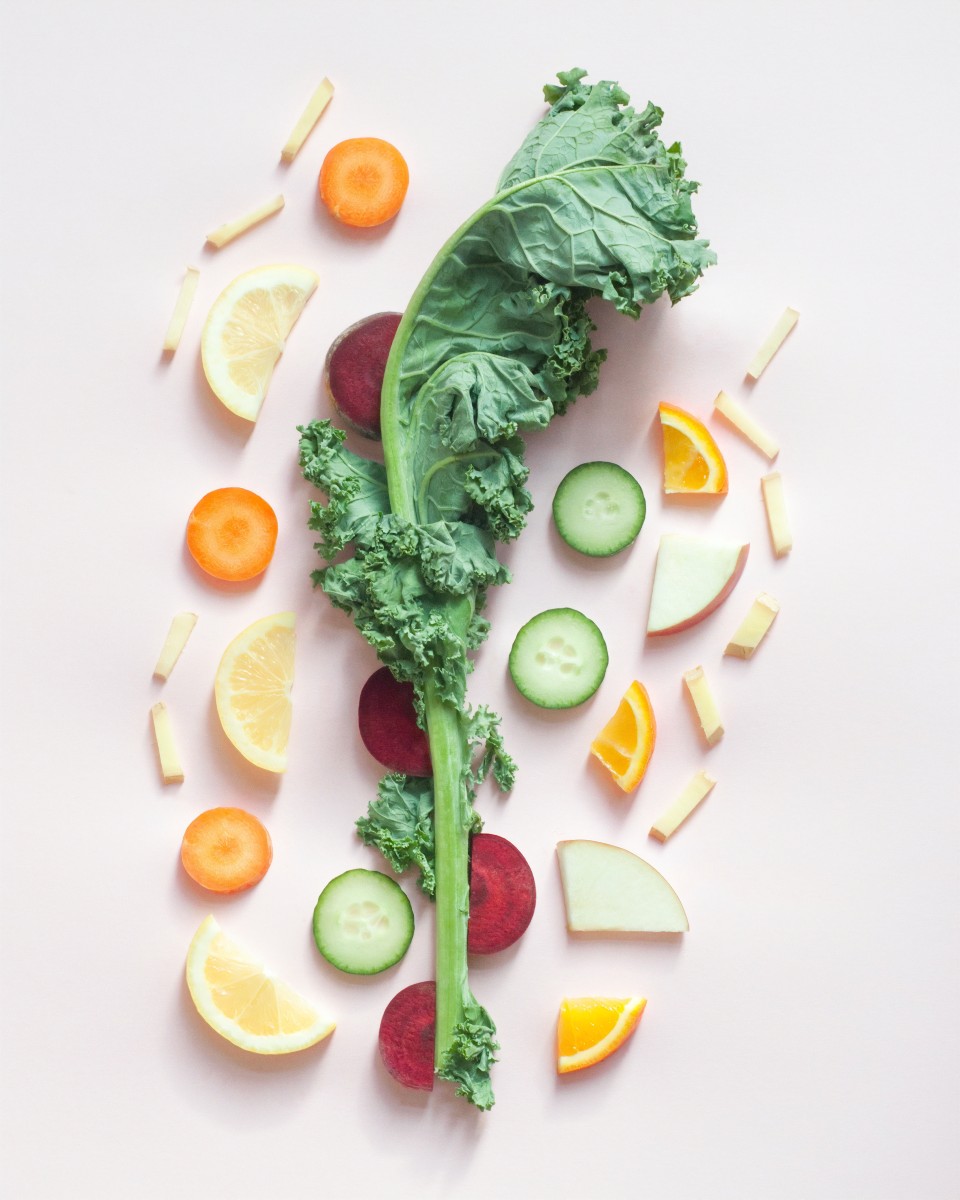
Recap of Strategies for Reducing Food Waste
-
Planning and Shopping Wisely: Meal planning, creating shopping lists, buying in bulk, and understanding food labeling can help minimize food waste from the start.
-
Proper Storage and Organization: Organizing the refrigerator and pantry, knowing optimal storage conditions for different foods, and using food storage containers effectively can extend the shelf life of perishables.
-
Mindful Cooking and Portion Control: Utilizing leftovers, cooking creatively with ingredients, practicing portion control and meal prepping can prevent food from going to waste.
-
Composting and Food Rescue: Setting up a composting system at home and donating excess food to local food banks or shelters are effective ways to divert food waste from landfills and support those in need.
-
Creative Recipes for Food Scraps: Using vegetable scraps for broths and stocks, transforming stale bread, and repurposing fruit peels and rinds can turn food scraps into delicious meals and reduce waste.
-
Conscious Eating and Leftover Management: Being mindful of portion sizes when dining out, effectively managing leftovers, and incorporating them into new meals helps minimize food waste.
-
Engaging the Community and Sharing Resources: Participating in community food sharing initiatives, sharing excess produce with neighbors or community gardens, and spreading awareness about food waste reduction encourage collective action and community engagement.
Encouragement to Adopt Sustainable Kitchen Practices
Reducing food waste is a responsibility that falls on us, whether we are individuals, families, or businesses. By adopting sustainable kitchen practices, we contribute to a healthier environment, save money, and support food security efforts. Let’s take the initiative to implement these strategies in our daily lives, starting with small changes that can significantly impact over time.
Importance of Collective Efforts in Creating a Sustainable Food System
While individual actions matter, creating a sustainable food system requires collective efforts. Collaboration among individuals, communities, businesses, and policymakers is crucial to address the systemic issues of food waste. By sharing knowledge, resources, and experiences, we can inspire and support one another in adopting sustainable practices. Together, we can create a more resilient and sustainable food system that minimizes waste, conserves resources, and ensures food security for all.
As we conclude our exploration of reducing food waste and embracing sustainable kitchen practices, let’s remember that our actions today shape the future of our planet. By being mindful of our consumption, practicing responsible food management, and engaging our communities, we can contribute to a more sustainable and waste-free world. Let’s commit to reducing food waste, one meal at a time, and pave the way for a more sustainable future.

